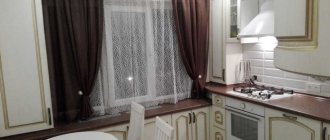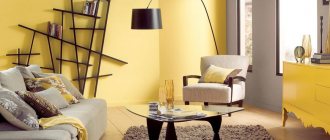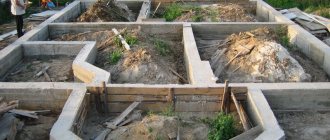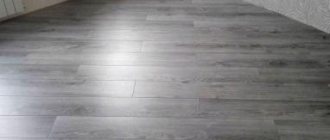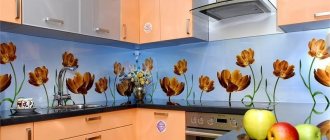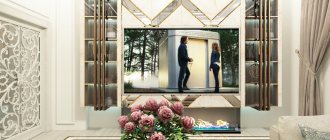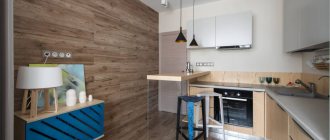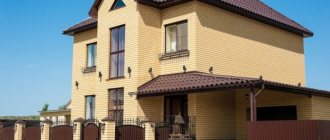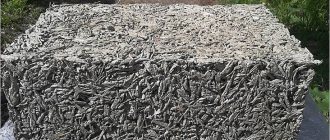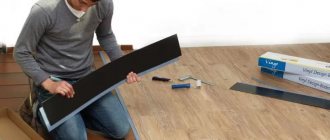No matter how much humanity strives in its development for urbanism, technocraticism and progress, no one has canceled the natural craving for nature. Despite all the benefits of civilization, we still want to bring at least a minimum of organic decor into our home in the form of flowers and flowerpots - and that’s great! After all, it is plants - in the house or near it - that complement the overall comfort and create a special atmosphere.
The area around the house is the calling card of any site.
What are flower vases?
A vase is not only an item for storing flowers, but also a stylish accessory. There are many variations of it in different shapes, sizes and colors. Most often, vases, pots and vases are made from ceramics. This material is practical due to its porous structure, which allows plants to “breathe”. Transparent vases will suit any interior and exterior design.
An excellent decorative option are outdoor flowerpots with a variety of plants.
Important: a transparent vase can be used not only for flowers, but also for decorative sand, aromatic compositions, and stones.
When it comes to landscape design, pay attention to the option of a floor vase, in addition to the usual flowerpots and flower pots. With its help, you can successfully design an area near the door or along the path to the garden. By the way, about places - for the garden and street flowers are usually placed:
- alongside the door;
- on the verandas;
- near other objects on the site (altanka, etc.).
Depending on the location, we select the type of flower girl, its shape and size.
General rule: maintain proportions!
If the space is wide and free, a small pot is not enough for a harmonious composition. And, conversely: if your garden is already rich in various trees and bushes, do not burden it with a huge flower bed.
Selection of outdoor flowerpots
Since outdoor flowerpots are designed to decorate the courtyard, front area, garden paths, stairs, porch, terrace or recreation area, they should be chosen based on functionality. So, a vacant lot or a newly planted area with little vegetation will be perfectly complemented by original oblong flowerpots or large flower beds.
Baskets woven from wicker will emphasize the romantic mood of landscape design
It is the size of the outdoor flowerpot that should be taken into account when choosing such a decorative element. Everything will depend on the total area of the plot or garden. An excessively large flowerpot in a small area will look too bulky, dominant and intrusive, depriving the relaxation area of comfort and harmony.
Amphorae for flowers, which are sometimes also called mobile flower beds, are an excellent decorative solution for any style of landscape design.
A small, inconspicuous flowerpot on a garden alley that is too long will simply get lost. And, on the contrary, an outdoor flowerpot of the optimal size will balance and emphasize the space as much as possible.
Glow-in-the-dark flowerpots are a very functional idea, since at night they act as lanterns and during the day they are ordinary flowerpots
Advice! Don't get too carried away with bright decor. The design of flowerpots should not be brighter than the flower arrangement planted in it. The most popular in landscape design are pots and vases of light, calm shades: white, beige, cream, brown, terracotta.
Funny pots in the shape of concrete busts with hairstyle plants will not leave you indifferent
Varieties of flower girls
Pots
They are a container made of plastic, clay, wood or other materials, and are intended for storing flowers and plants. Place pots on the floor, windowsill, furniture, shelves.
With their help, you can create entire compositions of flowers, or place accents throughout the area.
Flowerpots
They differ from pots in that they are intended for hanging. These flower beds have a special mount for ceilings and walls. Flowerpots will help hide the unaestheticness of pots - for example, made of plastic, if the overall interior design is made in eco style. In addition, you can place several flowerpots in it at once - the main thing is that the plants get along with each other.
Thanks to their easy movement around the territory, you can create new compositions, and during bad weather or in winter, transfer plants to the attic or veranda.
Material of flowerpots for gardens in the country and outside
Made of wood
This type of material is recognized as the best for plants. But remember to protect the flowerpot from rotting - cover it with varnish or other moisture-resistant substance on the outside.
To create flowerpots from wood use:
- boards and plywood;
- logs and stumps;
- cooperage products (barrels, tubs and others).
Such a product must be treated with a special agent that prevents rotting.
Maybe you have an old wooden box or pallet lying around somewhere - it could make a beautiful pot for outdoor plants. Use twine and textile tassels for decoration to preserve the spirit of the eco style.
Metal forged
Forged metal flowerpots are used to place plants on the outside of a window or balcony. This type is not only beautiful, but also much stronger and more reliable than others. Modern masters will turn any of your sketches into reality, or offer their own. A forged flower bed is an ideal option for climbing outdoor plants.
Metal flowerpots are durable and will last a long time.
Concrete flowerpots
By these we mean concrete blocks and other concrete products used as flowerpots. Although there are many master classes on the Internet for creating such a flowerpot with your own hands. Suitable for any plants, compositions made from succulents and stones look especially beautiful.
Concrete and gypsum products are durable, practical, and resistant to environmental influences.
Flowerpot made of cement
Cement is a little more pliable and easier to use than concrete, but no less durable. It is easier to make flowerpots with your own hands from cement. A popular option is using a terry towel.
- To do this, place a towel in a liquid solution of cement with glue, soak it well and place it on an inverted pot, previously wrapped in film.
- Leave to dry for 24 hours.
- For additional strengthening, cover the flowerpot with another layer of glue diluted with water, and then with a layer of cement.
- Paint the flowerpot in your favorite color or leave it as is.
They can have a wide variety of shapes and, in accordance with their shapes, can be used in different ways for site design.
Decorative vases made of stone
For connoisseurs of precious and semi-precious stones, we advise you to pay attention to vases and flowerpots made of natural stone. This is an excellent option for a premium-class home or cottage, which will emphasize the overall spirit of luxury and love for quality in the home. Such a vase or planter itself decorates the space; it is not necessary to use it for its intended purpose.
The process of making a container from stone is quite complex, so it is better to purchase such a product ready-made.
Flowerpots made from plastic buckets
A budget option suitable for those who like to do everything with their own hands. An ordinary plastic bucket can easily be transformed into a beautiful and capacious flowerpot for the street. Just cover it with paint, or use other techniques and techniques:
- decoupage,
- mosaic,
- stucco molding from polymer clay.
Plastic containers are usually purchased ready-made.
From other available materials
Any unnecessary, broken item can become a flowerpot for outdoor plants. A bicycle, a TV, a car tire, a dresser drawer and much more - whatever your imagination allows will do! Particularly interesting is the use of old musical instruments.
The choice of available tools for making a flowerpot is limited only by imagination.
Where is it appropriate to place flowerpots?
In everything regarding the choice of location and type of flowerpot, the owner relies on his taste and preferences. But still, there are general principles that will help you not to be disappointed in your choice over time, when a glaring discrepancy irritates your eyes.
Flowerpots look very harmonious on both sides of the porch and front entrance, inviting you into the house and promising a special cozy atmosphere. It is important to choose a combination of structure and decorative elements.
Wooden buildings, decorated with flowerpots in the form of wicker baskets, tubs made of boards, cuts of tree trunks, will look as organic as concrete or stone (even if it is a good stylization of plastic) flowerpots at the entrance to a house built of brick or lined with stone masonry
Flowerpots near the gazebo, near the summer kitchen, perfectly enliven the landscape. Plants in decorative containers, marking the entrance to the garden path, highlighting areas of the garden, placed along the walls of buildings on wide blind areas will create a unique spirit of any property.
You may be interested in: How to create a beautiful rose garden on your property with your own hands: step-by-step guide and photo examples
Dimensions of flowerpots and flowerpots
Only medium and large flowerpots are definitely suitable for the street; small ones are best left inside the house. When choosing a flowerpot, focus on the overall composition: how harmonious a particular size will look. Don’t be afraid to use large flowerpots in an open space, and don’t burden the overall composition if there are already enough flowerpots.
Decoration of the facade of the house - multi-colored boxes with flowers.
Flowerpots for cottages and garden plots
Along with tall flowerpots, flower beds and flower beds, you can use small flower pots in which you can plant annual plants. This idea will only complement the overall impression of comfort and well-groomed. Small flowerpots for the garden do not take up much space; they can be placed anywhere on your site, and rearranged if necessary. Small plastic flowerpots are easy to bring into the house if it is raining outside or you are going to leave the dacha for a few days.
Stone flowerpot
Ceramic flowerpot
Color scheme and style of vases and flowerpots
The style of flowerpots and their color largely depend on the general style of the site. Remember the general rule: maintain harmony when using shades of several colors. To do this, determine one or two basic colors and select two additional colors to complement them. This way you won’t seem like a tasteless person and will maintain the harmony of the composition.
If the site is planned to be decorated in a certain style, then it will dictate the appearance of the street decor.
Important! You should not choose flowerpots of bright and variegated colors. Let the plants attract attention.
Fashion changes, but the classics remain unchanged. So, plain flowerpots in neutral gray, brown, and white colors are a win-win option for any garden and home.
When choosing the size for a future flowerpot, you should take into account the space on the site.
Variety of shapes
Cone-shaped, square, triangular, spherical and many other options will demonstrate the creative character of the owner of the site. If a flowerpot is your way to make a bright, unusual accent, pay attention to a flowerpot. After all, the extraordinary shape of a pot is not always suitable for the normal development of the plant’s root system.
When choosing containers for flowers as decoration for your site, you should first of all evaluate their safety for people.
By the way, it is the type of plant that should be key when choosing the shape of the flowerpot. For example, oblong-shaped plants look better in long, tall pots. Low flowerpots go harmoniously with short flowers, and so on.
How to make a flowerpot with your own hands
We have already given several examples of how to make flowerpots for outdoor flowers with your own hands from cement or an ordinary plastic bucket. We offer other options:
DIY flowerpot from a stump
- Drill holes in the stump on the side where the future flowerpot will be recessed.
- Use a chisel to process the stump, removing excess layers of wood.
- Cover the stump with a protective layer to prevent rotting and plant the desired plants.
The easiest way is a flowerpot made from part of a cut down tree or stump.
DIY natural stone flowerpot
For such a gabion flowerpot you will need stones and mesh. Give the mesh the desired shape by making formwork out of it. Fill the middle with stones larger than the cell sizes. The flowerpot is ready!
In addition to natural stones, you can use artificial ones, which will be perfectly sized and look more aesthetically pleasing than natural ones.
DIY flowerpot made from old things
Old shoes - for example, rubber boots, look unusual in the overall composition of the garden. A particularly luxurious option is old musical instruments. Just imagine a piano with flowers growing inside, or a similar guitar! Use whatever you want. The main thing is to cover everything with a protective layer.
Don’t rush to throw away unnecessary rubber boots, because they can be used in the country as a house for flowers.
Continuous flowering garden of perennials
A flower garden of free-form perennial plants, a real decoration of the garden, requires the least care and attention. How to decorate it beautifully with your own hands?
To prevent mistakes, you must:
- make a list of plants indicating their flowering period (summer, autumn flowers or blooming all summer)
- draw a planting plan taking into account the height and width of the bush of each specimen
- mark a place for a flower garden on the site and evaluate it from the point of view of visibility and background
Popular articles Description of types of sliding glazing for verandas and terraces, do-it-yourself installation
The most popular perennial bulbous plants begin to bloom in the garden in spring: these are unpretentious flowers that reproduce quickly and easily. As a rule, small-bulbous plants (scillas, quinodoxes, snowdrops, white flowers, crocuses, muscari) do not need to be dug up after flowering; they only need to be replanted once every few years. Bulbs are planted in large groups, preferably at least 50 pieces, so that the flowers form a bright spot.
Crocuses are the first spring flowers
In addition to small-bulbous plants, in spring tulips, daffodils, hazel grouse, decorative onions, pushkinias, hyacinths, primroses, hellebores, subulate and splayed phlox, alpine forget-me-nots delight with bright colors.
Tulips and daffodils
Bulbs of tulips, daffodils, hyacinths, and hazel grouse are planted in the fall, and after flowering they are dug up, dried, sorted and stored in a cool place until planted again. Primroses, phloxes, hellebores and forget-me-nots are perennial rhizomatous plants, they are unpretentious and winter-hardy, bloom early and for a long time.
Hyacinths
Doronicum, gravilat, and dicentra bloom in May-June.
Irises of various shades begin to bloom in summer. When planting irises, it is necessary to take into account that they do not tolerate stagnation of water and deepening of the root collar during planting.
Multicolored irises
In June, peonies, aquilegias, chickweed, cyanosis, pyrethrum, aubrieta, oriental poppy, lychnis, lupins, and evening primrose bloom. In July - lilies, carnations, gypsophila, delphiniums, daylilies, monarda, cornflower, roses. In August and September, autumn flowers delight: asters, helenium, gladioli, loosestrife, paniculate phlox, echinacea, chrysanthemums.
Terry peonies
Decorative foliage perennials - hostas, heucheras, brunnera, ferns, tiarella, chistets - highlight the bright beauty of flowering plants.
Hostas and decorative onions
Where to take a master class on making flowerpots
Nowadays, so much knowledge is available online. You can learn how to create flowerpots with your own hands using videos on Youtube, or by taking training from specialists. It all depends on your needs and desired result. Landscape design courses in your city will give you not only knowledge about flowerpots, but also in general how to harmoniously arrange the area near your house.
Unnecessary metal barrels will ideally solve the problem of planting large plants, and painting them in bright colors will become a very aesthetic addition to landscape design.
Street flowers in pots as a decorative element of the landscape
Many people want to have a house outside the city. This is an opportunity to spend a weekend closer to nature, in peace and solitude, away from the bustle and crowded streets. An obligatory component of a personal plot is outdoor plants. Someone purchased a building on an already green area and simply made adjustments or additions, but more often the arrangement is done from scratch.
If it is not possible to create a real flower garden, then you can always create a greenhouse from flowers in pots
Not a single design development, created by a professional or an amateur, is complete without flower beds. They make the structure bright and interesting and bring vibrant natural colors into the surrounding design. Flowers are an uncomplicated, unique way to decorate the most modest landscape. And it is accessible to everyone: if the composition of the soil, lack of space or any other reasons do not allow you to set up a flower garden, you can create a real greenhouse from flowers in pots. On the street, it is appropriate to place them on the ground, along paths, benches, gazebos... Or they can be mounted on a fence, pergola, terrace, or even on the wall of a house. The structure entwined with flowering plants looks truly fabulous.
Even if you don’t have a country house, you shouldn’t deprive yourself of the pleasure of being among flowers in the summer. Pots with plants can be mounted on the outside of the balcony, loggia, and even on the window slope. In specialty stores it is easy to find both the containers themselves and various devices for hanging and installation. It is possible to purchase a pot with a ready-made flower, but you can go from a seed or sprout to a blooming avalanche.
Popular articles Design of a rectangular plot
The finished plant option seems simpler only at first glance
It is important to organize adaptation correctly, otherwise the plant will lose its attractiveness. The second way is longer, but with proper care, the beginning of the growing season will bring a lot of pleasure
Flower pots can be used not only in a country house, but also in a city apartment
Which flowerpot with base to choose
Before chasing fashion, explore your real possibilities:
- budget;
- size of territory;
- general style of the site;
- desired result.
If your budget is small, pay attention to master classes on repurposing old things or creating flowerpots with your own hands from cement, concrete, wood and other materials. With the help of such flowerpots you can easily emphasize the “eco” style and not leave all the money to the landscape designer.
An unusual composition of concrete cubes will become a real asset to your yard design.
Previously, we looked at all possible options for flowerpots and flower beds, their advantages and disadvantages. Well, the choice, of course, is entirely yours! The main thing is to remember the proportions, harmony of colors and biological compatibility of plants. Choosing everything yourself, or trusting professionals is a matter of budget and your personal preferences. We advise you to trust your feelings and preferences, relying on the basic knowledge of our article.
We wish you good luck in creating a harmonious space near your home!
Outdoor flowerpots: concrete, plastic, stone
After choosing the purpose and dimensions of the desired flowerpot, it is worth considering the materials from which it will be made. The most popular are stone, concrete and plastic outdoor flowerpots. Natural materials such as clay are also often used. The plasticity of clay allows you to create unique shapes and textures, but they must be covered with a special glaze to retain moisture and increase resistance to low temperatures.
Bringing special charm, charm and sophistication to the garden setting, outdoor flowerpots will help transform even the most dull corner of the garden
Flowerpots made of natural or artificial stone are often placed on special stone pedestals and stands, and are often decorated with intricate relief patterns. Their main advantages are durability and special decorativeness. Stone flowerpots and pots for the garden perfectly retain moisture, which prevents the soil from drying out.
Planters made of natural stone look very unusual
Fun black and white ceramic pots
Due to their impressive size and heavy weight, concrete outdoor flowerpots are suitable mainly for decorating large areas.
In the role of flower pots - an unusual composition of concrete cubes - will become a real asset to the design of your yard
Concrete street flowerpots are made in the form of large vases, which is a fairly aesthetic and practical way of planting flowers, compared to conventional flower beds. Often concrete outdoor flowerpots are modular containers. Their design consists of a concrete base and a flower vase made of concrete or stone chips.
A big plus of most flower pots is their mobility, which allows you to change the “scenery” at any time.
Such flowerpots have a fairly long service life, do not crack due to temperature changes and are not exposed to water. Also, concrete outdoor flowerpots are made using reinforcing mesh, which increases the strength of the products.
Concrete blocks can also be used as a flowerpot; if they are painted brightly, they will become an indispensable element of decor.
The most economical option for decorating a garden plot is plastic outdoor flowerpots.
A bright composition of three red flowerpots will decorate a relaxation corner
Plastic pots, the configuration of which allows them to be “dressed” on vertical partitions, most often on fences
They are often made in bright, rich colors, and in themselves are a self-sufficient element of decor. The cost of plastic flowerpots is quite low. One of the undeniable advantages of plastic outdoor flowerpots is their mobility due to their low weight. And thanks to the latest technologies, plastic products can imitate various surfaces - clay, stone, etc. Vases, flowerpots and pots made of plastic can perfectly retain moisture, preventing plants from drying out.
Small plastic pots with flowers will decorate the fence at the dacha
